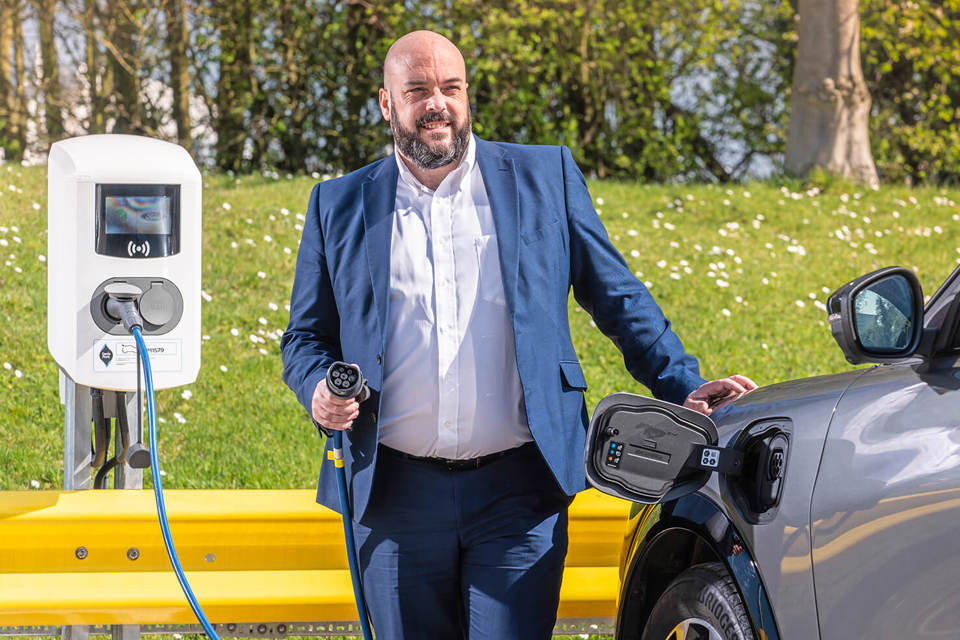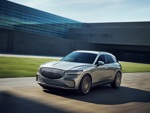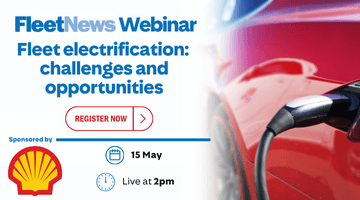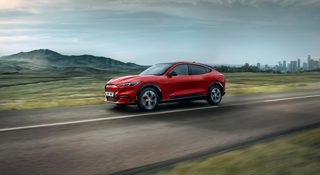Ford has been dominating the headlines in recent months following a flurry of announcements defining its roadmap for the next decade.
At the tail end of 2020 came the reveal of its first purpose-built all-electric car, the Mustang Mach-E, available to order now, and its first full electric van, the E-Transit, due for release in early 2022.
Hot on their heels came the launch of Ford Fleet Management, a joint venture with ALD offering fleets of all sizes funding and fleet management services.
In February, Ford entered a global strategic partnership with Google to develop connected vehicle services and infotainment systems.
Then came the big one: its intention to go completely battery electric (BEV) and plug-in hybrid (PHEV) across its entire car range in the UK by 2026, and BEV-only by 2030, plus a commitment to having a zero-emission BEV or PHEV option for each van model within three years.
And, most recently, Ford revealed it would no longer make the archetypal repmobile Mondeo from 2022, bringing an end to almost three decades of production in the family car D-segment.
Plenty to talk about, then, as we shared screen time with Ford of Britain fleet director Neil Wilson shortly after his 18-month anniversary in the role.
BEV and PHEV in five years and BEV-only by 2030 are the car- and vanmaker’s goals.
Ford has been dominating the headlines in recent months following a flurry of announcements defining its roadmap for the next decade.
At the tail end of 2020 came the reveal of its first purpose-built all-electric car, the Mustang Mach-E, available to order now, and its first full electric van, the E-Transit, due for release in early 2022.
Hot on their heels came the launch of Ford Fleet Management, a joint venture with ALD offering fleets of all sizes funding and fleet management services.
In February, Ford entered a global strategic partnership with Google to develop connected vehicle services and infotainment systems.
Then came the big one: its intention to go completely battery electric (BEV) and plug-in hybrid (PHEV) across its entire car range in the UK by 2026, and BEV-only by 2030, plus a commitment to having a zero-emission BEV or PHEV option for each van model within three years.
And, most recently, Ford revealed it would no longer make the archetypal repmobile Mondeo from 2022, bringing an end to almost three decades of production in the family car D-segment.
Plenty to talk about, then, as we shared screen time with Ford of Britain fleet director Neil Wilson shortly after his 18-month anniversary in the role.
Juggling with the challenges
Like his peers, Wilson has been juggling his way through the coronavirus pandemic while planning strategy at, arguably, the most disruptive time in the automotive industry, as new fuels, purchasing models, mobility options and funding methods jostle for favour.
However, it also presented an opportunity to get important customer feedback on Ford’s business proposition and interaction with customers.
Those conversations reinforced the importance of a responsive culture, working in partnership and offering the right products and services. The mobile van servicing network, for example, has been “a key asset” and is being expanded – it’s now a common request on fleet tenders.
Keeping vehicles and drivers on the road has become paramount as fleets strip out any business flab and run leaner and tighter operations than ever before.
Consequently, Wilson advisedly describes the launch of the Ford Liive (yes, two ‘i’s) uptime software for vans as its “biggest launch”.
Ford Liive uses real-time data to provide fleets with vehicle-specific maintenance information across more than 250 data points, including oil life, fuel performance and AdBlue levels, enable personalised scheduling of servicing at the most efficient time and send notifications when an action is identified that could help prevent a breakdown.
Ford projections suggest it could cut vehicle downtime by up to 60% and roadside assistance callouts by 30% due to fewer breakdowns and workshop visits and by enabling shorter servicing/repair times.
More than 100,000 vans in the UK have the necessary modem installed; it’s been standard-fit since 2019.
Next year, that number is forecast to double.
The free service can be accessed via the FordPass Pro app for businesses with up to five vehicles and via a vehicle health dashboard in the Ford Telematics tool for larger fleets.
“A Ford Liive centre will know where the vehicle is and can work with the dealer so the vehicle is triaged and put back on the road quickly by prearranging parts supply.”
Neil Wilson, Ford of Britain
“We are also trialling virtual headsets to connect the engineer at Dunton (Ford’s technical centre in Essex) with the dealership so they can help sort any issues in real time.”
Later this year, Ford will introduce a replacement vehicle offer for any van it is unable to fix within 24 hours at a dealership. “We want to achieve 100% uptime – that’s our journey,” Wilson says.
Switching on the modem
Ford Liive could potentially be rolled out to cars as well as vans, although Ford has yet to confirm if, or when, this will happen. Its immediate priority is to get all fleets to sign up to the service by giving their permission for Ford to switch on the modem.
“The power is the data – it will maximise their efficiency and keep vehicles on the road. Our desire is for all customers to have access – it’s a game changer in how we look after our fleet customers.”
Neil Wilson, Ford of Britain
The data can also be accessed by leasing companies, subject to permissions, enabling them to more effectively manage uptime for their customers.
Also high on the fleet agenda is business simplification: with fleet management, telematics and EV strategies congesting the fleet ether, Ford needs to guard against over-complicating its business relationships.
“One of our workstreams is to simplify our touchpoints and relationships with customers,” says Wilson. “We will be trialling different approaches with different customers. But we know that flexibility means a better service.”
He adds: “Over the past 12 months, I’ve been impressed with how Ford and our dealer network have responded to our customers. But we’ve had to learn to be adaptable – and I’ve given up trying to predict what’s going to happen!”
Van registrations exceed expectations
The car market was tough throughout 2020 – Ford’s registrations fell year-on-year for 10 of the 12 months, including every month from September. However, over those final four months, its van registrations were up year-on-year, exceeding expectations.
“Vans have proved how important fleet is to the British industry in keeping business moving,” Wilson says.
It’s fair to say that Ford has not been an electric trailblazer, despite trialling an electric version of the Focus for a few years from 2013. Its first purpose-built full electric vehicle, the impressive Mustang Mach-E, only launched in the UK this month – although the order bank exceeded expectations – but Wilson believes the timing is right as interest from fleets starts to accelerate.
It has also encountered battery overheating issues on the Kuga plug-in hybrid due to cell contamination – work to install a new drive battery pack has now been completed – which hampered registrations in the final quarter of 2020.
However, Ford now joins a growing throng of carmakers committed to switching their entire car ranges to BEV and PHEV ahead of the 2030 new car sales ban – in Ford’s case 2026, going BEV-only four years later.
Given its fleet model mix remains heavily weighted towards petrol (39%) and diesel (33%), with a further 22% mild hybrid, the 2026 deadline is an ambitious, though clearly laudable, target.
Fuelling change gathers pace
Nevertheless, the rate of change is gathering pace – in 2019, 58% of Ford’s new car registrations were petrol and 39% diesel. The remaining 3% were petrol hybrid. And the Kuga points the way ahead: PHEV accounted for around two-thirds of fleet order take when the car was in full production.
The build-up to the identical 2030 ban on sales on new petrol/diesel vans will be slower and, from Ford’s perspective, a little less prescriptive. It has committed to offering a BEV/PHEV option across its entire light commercial vehicle line up by 2024 but will continue to offer diesel options for these workhorses of the fleet landscape.
A BEV Custom will be added to the existing PHEV derivative in 2023, while trials of the all-electric 217-mile range E-Transit begin this year with early demos arriving towards the tail end. Feedback from the partner fleets will feed into the official launch in 2022, which mirrors the approach Ford took with the Custom PHEV in 2017.
“Lots of customers are talking about electrification in their CV line up but it’s a blend of BEV and PHEV – it’s hard for them to go sole BEV.”
Neil Wilson, Ford of Britain
He’s far more bullish about the prospects for cars, and the implications for the company car market as a whole.
“By 2023-24, we see electric becoming the most dominant powertrain in the fleet sector,” says Wilson. “We’re also seeing companies that have moved to cash now rethinking their policies, and some are adopting EV policies thanks to the low benefit-in-kind (BIK) tax. We anticipate a resurgence in company car schemes and salary sacrifice.”
Login to continue reading.
This article is premium content. To view, please register for free or sign in to read it.
























Login to comment
Comments
No comments have been made yet.